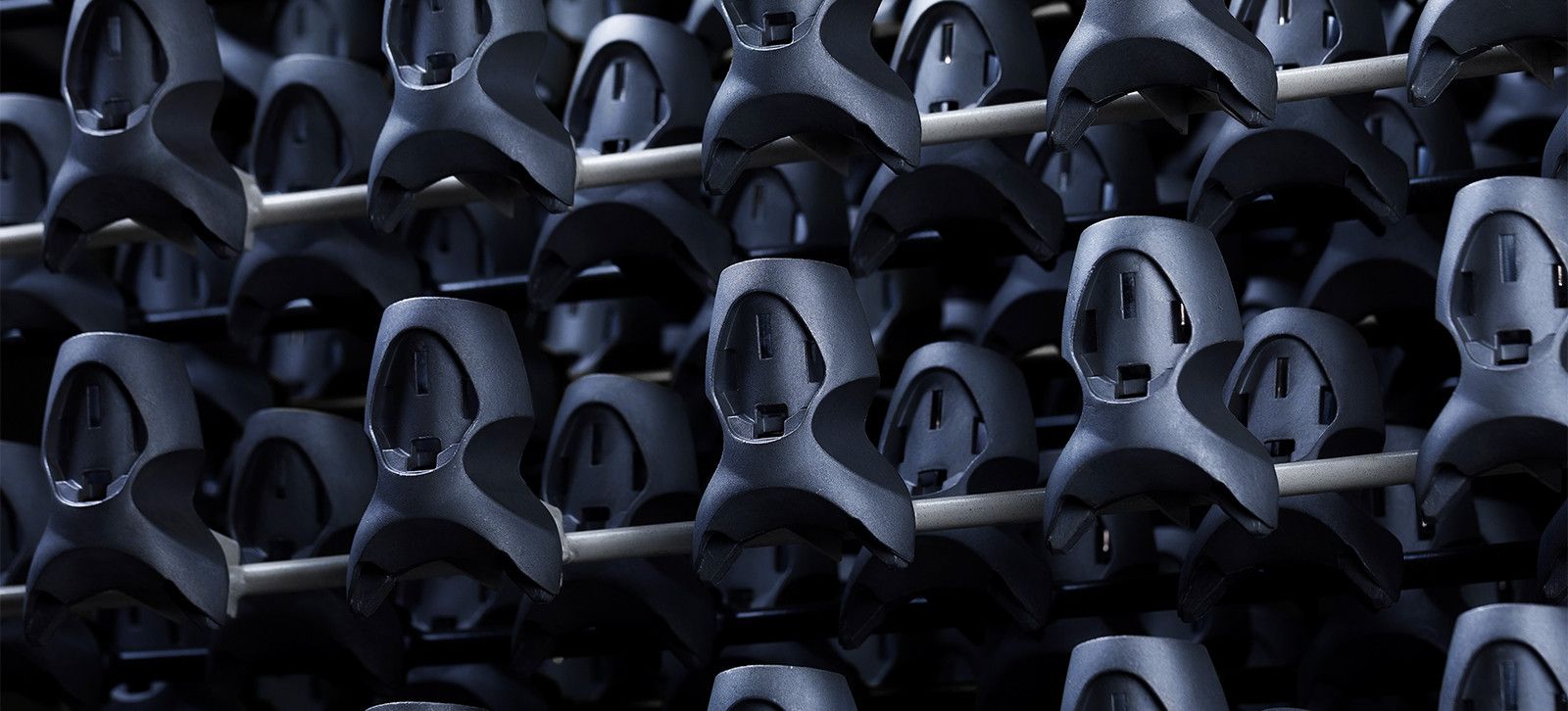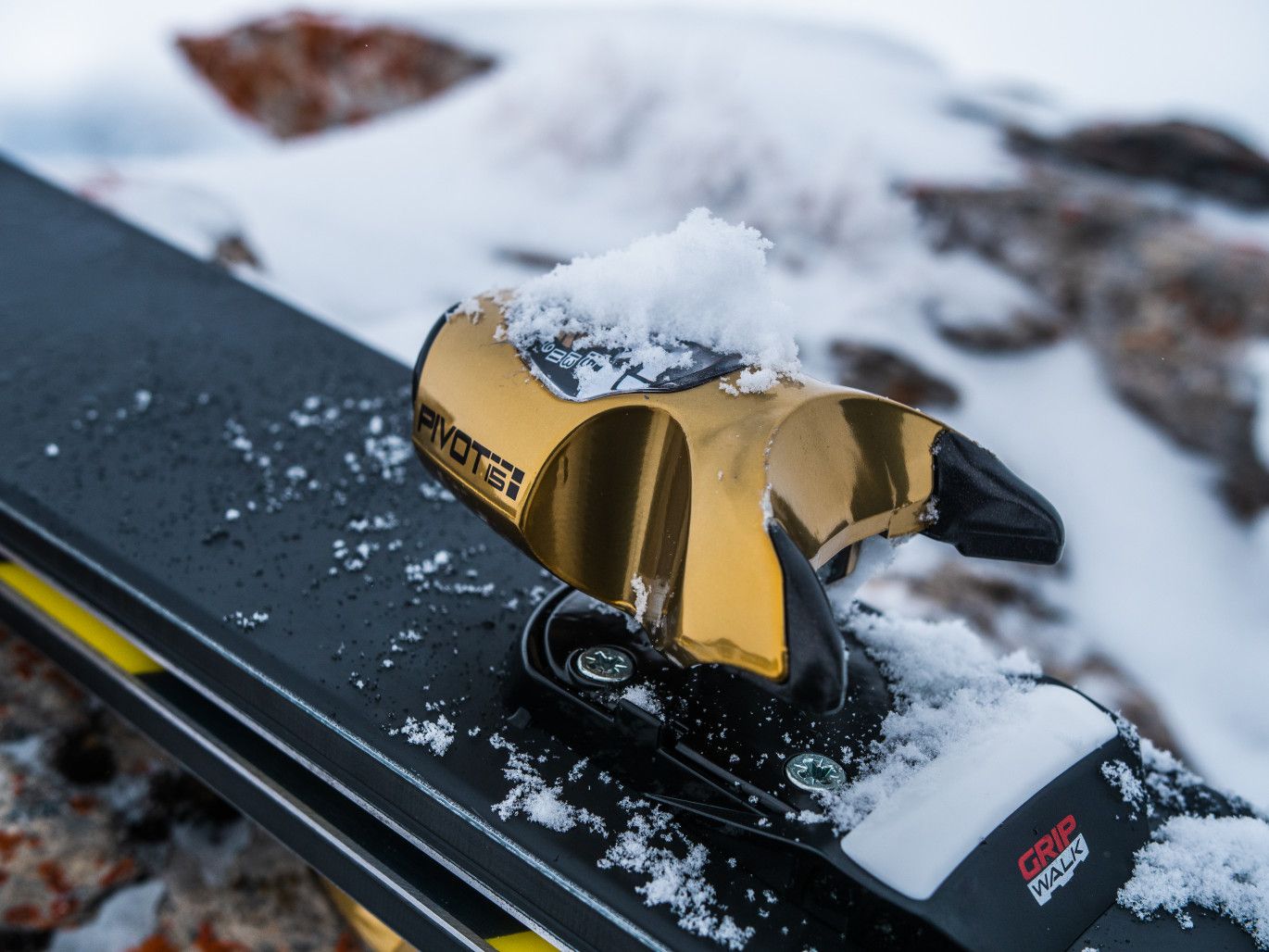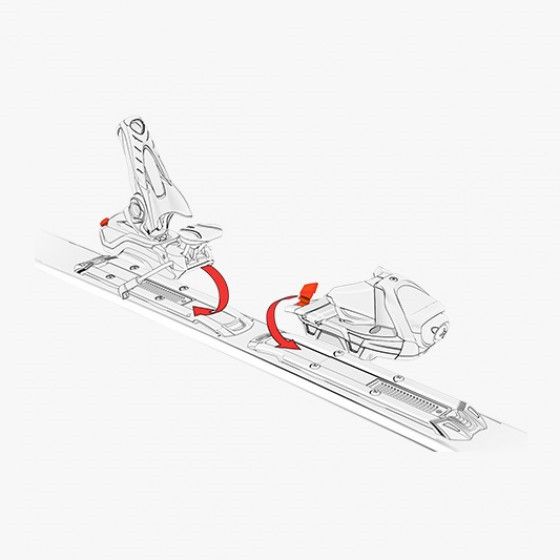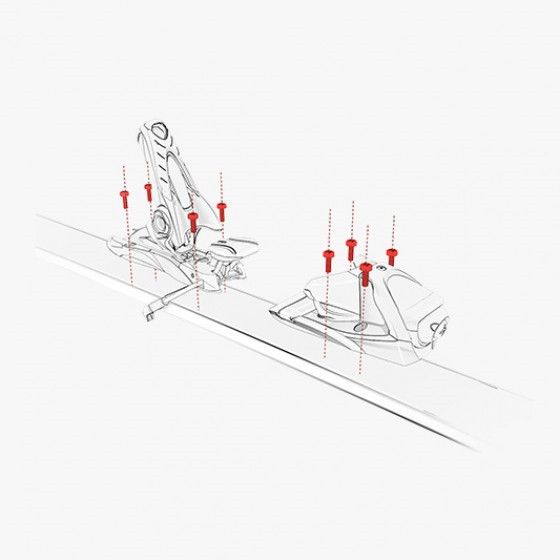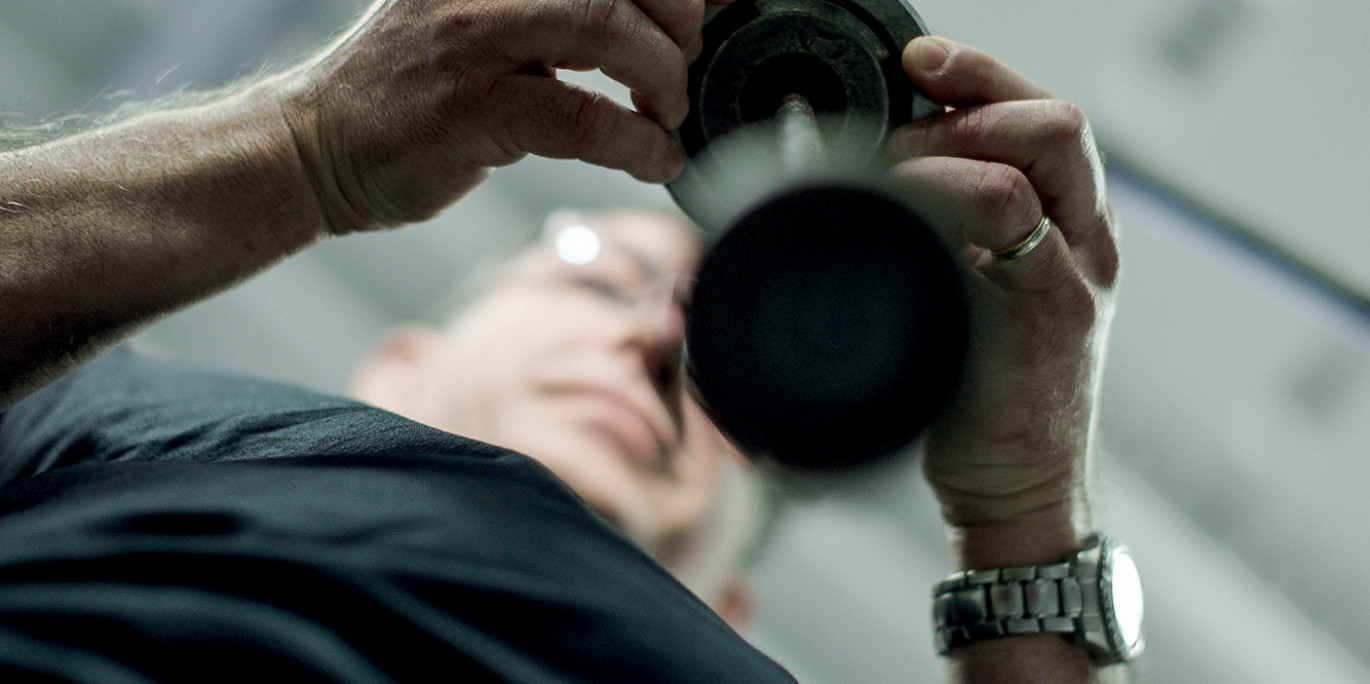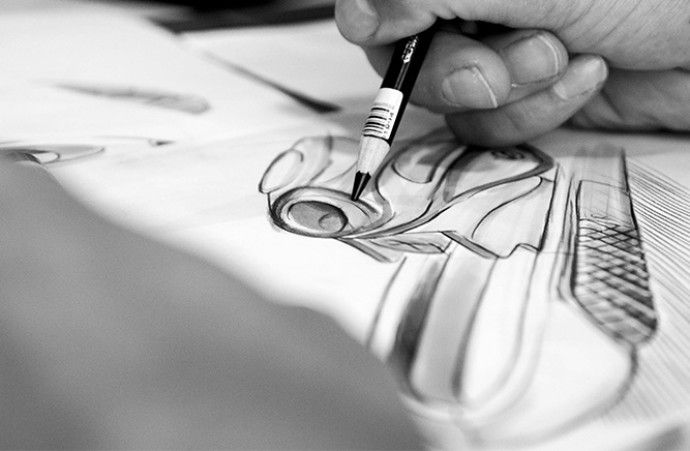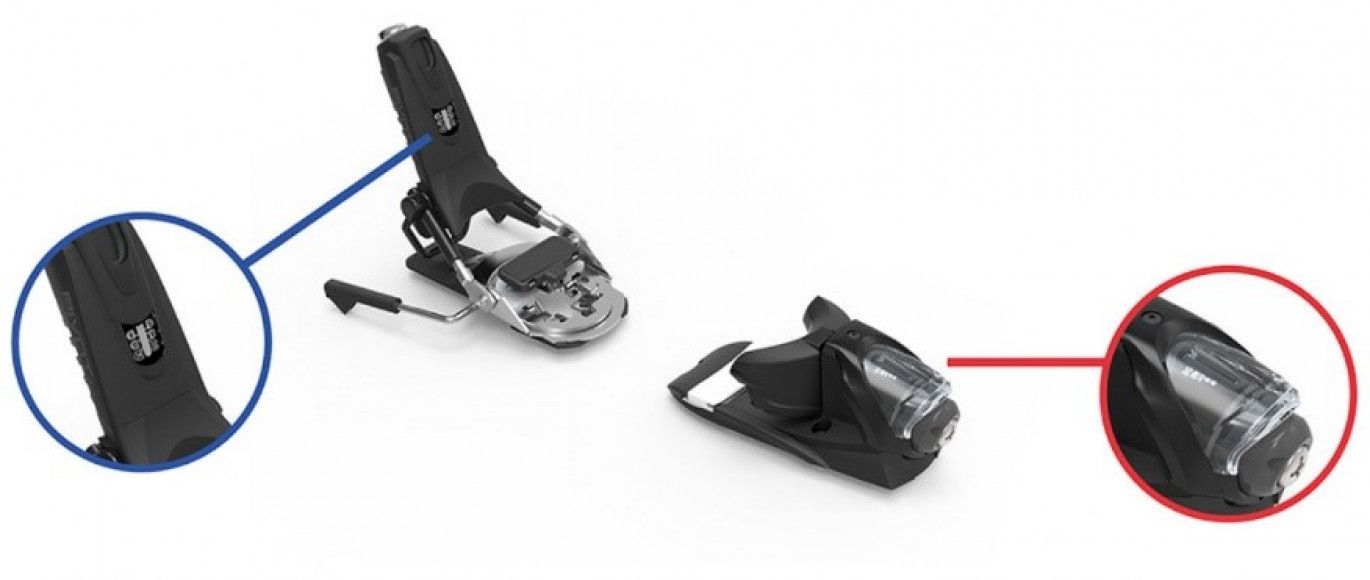LOOK MATERIAL GUIDE
Here are a few tips and answers to help you make your choice and select the model that suits you best.
WHAT ARE SKI BINDINGS FOR ?
Ski bindings allow the skier to control his skis. They must therefore be precise and reliable so that the skier can ski with confidence and have a maximum of pleasure.
Of course, they also have the function of limiting the risk of injury in the event of a fall, and this is a particularly important role: they are designed and certified in accordance with the applicable ISO standards. It is therefore essential to ensure compatibility between bindings and ski boots for which there are different standards.
Finally, and this is often forgotten, your bindings help you carry your pair of skis easily when you clip the stop-skis (brakes) together .
HOW TO CHOOSE THE RIGHT SKI BINDINGS ?
1. CHOOSE THE MODEL ADAPTED TO YOUR SKIS AND YOUR PRACTICE
Most skis are now offered with an associated pair of bindings, the PACKS.
In addition to design, colour and mounting compatibility, the characteristics of the bindings offered in the pack are adapted to those of the skis and the practice for which they are intended. Therefore, trust the manufacturer and your retailer when recommending a complete package.
If you select your bindings yourself, make sure that the adjustment range of your bindings allows for a sufficient latitude of adjustement and check the width of the brakes to ensure that they are best suited to the width of the skis.
"SYSTEMS" BINDINGS
Piste skis and some All Mountain skis are equipped with interfaces compatible with only one type of binding, this is called a "SYSTEM".
Their interfaces (plates) have been developed to improve the behaviour of skis in curves. By slightly raising the position of the boot, the ride is more incisive and more powerful.
The KONECT system is used on high-end, high-performance skis. The XPRESS system focuses on lightness and comfort for leisure skiing. Children's skis are equipped with the KID system which is automatically compatible with children's "C" ski boots and adult "A" ski boots.
OPEN OR TO BE SCREWED BINDINGS
Freeride and touring skis and some All Mountain skis do not have an integrated ski system. Therefore, your dealer will have to install "OPEN" or "TO BE SCREWED" bindings on the skis after having drilled them beforehand.
The length adjustment range of "open" bindings is often reduced in order to favour transmission, ski-snow contact and lightness: in this case it is necessary to be as close as possible to the snow and without interface.
Here, in a few lines, are the main families of LOOK bindings :
The PIVOT binding is a mythical product, the reference in the world of Freeskiing for those who are looking for a product without concessions. The best riders have absolute confidence in this binding: #itrustlook.
The SPX technology was developed for the World Cup in collaboration with the athletes. The SPX bindings therefore ensure a high level of precision, performance and safety, both on piste and freeride. Available in a screw-on version for flat skis or on Konect systems fitted to certain skis.
NX bindings are ideal for all skiers who are looking for a secure, lightweight and easy to use binding. Available as a screw-on version for flat skis or on Konect systems for certain skis.
TEAM models are designed specifically for children, with a constant focus on safety and lightness. They are automatically compatible with children's (type C) and adult (type A) boots.
The HM, ST or SUPERLITE touring bindings with PIN TECH technology allow mountain skiers to practice touring or ski mountaineering.
2. CHOOSE THE MODEL ADAPTED TO YOUR SKIS BOOTS
There are several standards for ski boot soles:
The flat soles that you have all known for more than 30 years, conform to the ISO 5355 standard, adult "A" or child "C" type.
- The new GRIPWALK walking soles that make life easier for skiers when they walk... and conform to the future ISO 23223 standard, adult "A" or child "C".
- The soles of ski touring boots, generally conform to the ISO 9523 standard.
All LOOK bindings (except the "RACE" racing range) are now compatible with the first 2 standards:
- ISO 5355, "A" and "C".
- GRIPWALK (future ISO 23223), 'A' and 'C'.
RACE" bindings are only compatible with ISO 5355 "A" flat soles.
The use of ISO 9523 touring boots (with metal inserts) is only possible with LOOK bindings dedicated to touring with PIN TECH technology.
| BINDINGS / BOOTS | ISO 5355 A | ISO 23223 A | ISO 5355 C | ISO 23223 C |
| Markings A | X | |||
Markings A | X | X | ||
| Markings CA | X | X | ||
Markings CA | X | X | X | X |
| Markings C | X | |||
Markings C | X | X |
3. DETERMINE THE RELEASE VALUE AND HAVE YOUR BINDINGS ADJUSTED
Weight, height, age, level of practice and boot length are used to determine on which figure to place the indicator at the front and back of the binding, in accordance with ISO 11088.
Use this "ISO Setting" link and access the ISOSKI application to determine the release value that suits your criteria and that will allow you to ski with maximum safety.
Always ask a professional to precisely adjust your bindings to your boots and adjust them to your profile.
Visit the "Technologies" page to learn even more and understand in detail the features that make LOOK bindings your best allies for unforgettable days of skiing.
